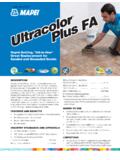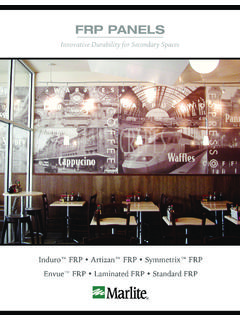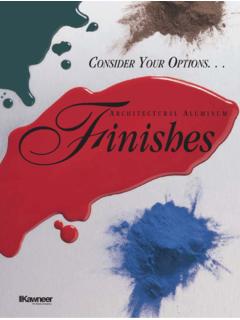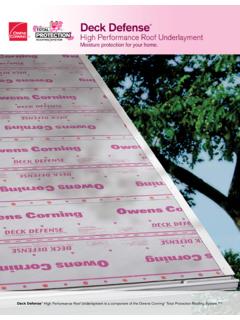Transcription of PCB Laser Technology for Rigid and Flex HDI – Via ...
1 PCB Laser Technology for Rigid and flex HDI Via formation , structuring , routing Dr. Dieter J. Meier, Stephan H. Schmidt* LPKF Laser & Electronics AG Garbsen, Germany and Wilsonville, OR* Abstract A new versatile Laser Technology is available that is capable of working with both ridged and flexible boards using only one Laser source. This system is based on a THG-UV Laser (355 nm) and vector data software. This system can be used for drilling, cutting and structuring . Small and medium board manufacturers will be able to enter the HDI market with a minimum investment and a guaranty of high yields for each Technology step.
2 Various materials and combinations including glass fiber reinforced substrates can be drilled, cut and structured with the same equipment. This paper will introduce special applications in the area of micro via formation (minimum diameter of 30 m at 250 holes per second), Laser direct structuring (minimum line widths of at inches per second) and routing (compounds of various materials) and will discuss the technological benefits. Introduction The trend to further miniaturization continues. For Rigid and flex circuits the industry predicts dimensions1 that can t be produced economically with the current Technology .
3 Low yield and technical requirements that can t be matched require a Technology change. High density interconnect (HDI) circuits require microvias with diameters of less that 40 m and tracks with less than 50 m width. The well-established Laser Technology will definitely play a leading role in this Technology change2. When choosing a Laser system it is necessary to answer the following questions: Does the Laser system s performance meet the demand for current and future generations of both flexible and Rigid circuit board? Is the chosen Laser Technology capable to handle the selection of materials (metal layers, glass fiber, different substrates, adhesive, solder mask, galvano- and photo resists, etc.)
4 ? Which wavelength is best, considering the absorption ratio and ablation performance of the desired material? Is the performance of the Laser including power, regulation and consistency wide enough to cover the range of desired material properly? Can the mechanical design of the system deliver the required accuracy and repeatability in the micrometer range? An ideal concept would be an inexpensive system with only a single Laser source, yet flexible enough to cover a broad range of applications on flexible and Rigid boards. This would enable small and medium sized businesses to enter Laser Technology .
5 For better return on investment, an ideal system would be versatile enough to drill holes but also structure circuitry as well as scribe and route boards. Laser and System Concept The Laser source has been designed particularly for this application field. It is based on a Q-switched Nd:YAG Laser with a wavelength of 355 nm (UV). At this wavelength most of the metals (Cu, Ni, Au, Ag) that are to be ablated in printed circuit applications show absorption rates of more than 50%. Organic materials can also be accurately ablated. The high photon energy of UV lasers at cracks the chemical bonding as the ablation process in the UV spectrum is partly photo-chemical and partly photo-thermal.
6 These capabilities make a UV Laser system the first choice for applications in the printed circuit board industry7. The system should only use a single Laser source for budgetary reasons, but still have to provide an energy density (fluence) of more than 4J/cm that is needed for opening the Cu surface when drilling microvoia4 holes or for structuring Sn layers5. The ablation process of organic material such as epoxy resins and polyimide requires only an energy density6of around 100mJ/cm2. To address this wide spectrum the Laser would need a very precise and sophisticated energy control as the drilling of microvias requires a 2-step process.
7 The first step opens the Cu with a high fluence and the second step removes the dielectric with low fluence. Another aspect in using one single Laser source is the spot size. CO2 lasers with their usual spot size of 70 m9 can t drill state of the art microvias with less than 50 m in diameter directly. Instead it is necessary to use a pre-etched conformal mask on the board to limit the Laser beam to the desired diameter10. UV lasers on the other hand typically have a spot size of approx. 20 m at a wavelength of 355nm. The frequency of the Laser pulses is between 10 and 50kHz at a pulse length of less than 140ns.
8 Detailed investigations of the resulting blind vias indicate that 140ns pulse length causes no Heat-Affected-Zone (HAZ) in the material. Fig. 1 shows blind vias in Cu with a diameter of 70 m. The substrate material is FR4. Fig. 1: Heat-Affected-Zone (HAZ) test pattern Therefore both flex and Rigid materials can be properly processed with this pulse length. Fig. 2 shows the basic principal of such a system11,15. The Laser beam is positioned with a computer-controlled scanner / mirror system and focused through a telecentic lens that allows the beam to maintain a right angle to the drilled material.
9 This scanning process allows the software to generate a vector pattern and it compensates for both material and layout deviation. The scanning area measures 55 x 55 mm ( square). Fig. 2: Scanner concept This system is compatible with a CAM software12 that imports all common data formats such as GerberTM RS-274S and RS 274X, ExcellonTM I and II, Sieb & MeierTM, DXFTM, BarcoTM DPF, HP-GL and ODB++TM among others. The mechanical design is based on a Rigid granite construction precisely polished to a surface accuracy of less than 3 m. The table rests on air bearings and driven by linear motors.
10 The positioning accuracy is controlled with glass scales that guaranty a repeatability of 1 m. An optical sensor integrated in the table itself compensates for the optical distortion and long-term drift based on an accurate alignment of the Laser position at various mirror locations. The software creates an array of correction data based on the alignment that is overlaid on the entire scanning area. The calibration for the drift compensation takes about 1 minute and can be done while a work process is executed. Any variation in the substrate itself, such as inaccuracies in the positioning caused by deviation of the fiducials, is detected by a high-resolution CCD camera and compensated for by the control software.






